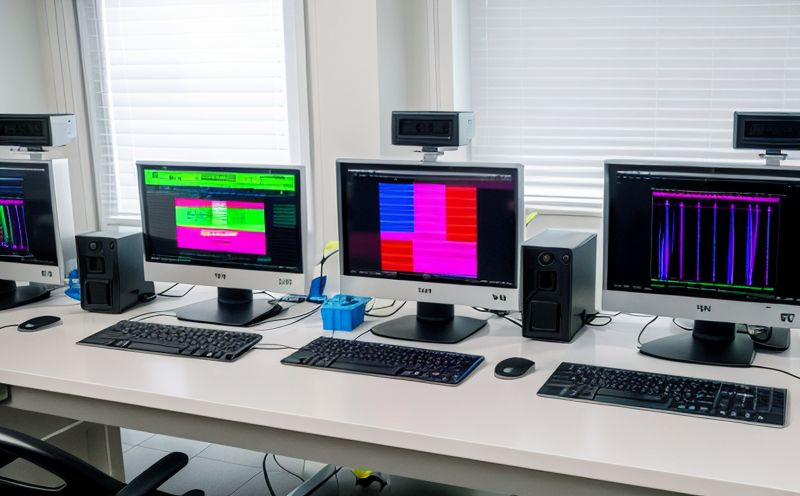CDC Enterovirus Detection and Quantification Testing
The CDC (Centers for Disease Control and Prevention) Enterovirus detection and quantification testing is a critical service utilized in the biological and microbiological testing sector. This specialized testing ensures accurate identification, quantification, and monitoring of enteroviruses, which are a group of RNA viruses that can cause a wide range of human diseases.
Enteroviruses are among the most common causes of gastrointestinal illness and respiratory infections worldwide. They also play a significant role in causing neurological disorders such as meningitis, polio-like paralysis, and encephalitis. The CDC Enterovirus detection and quantification service is essential for public health surveillance, research, clinical diagnosis, and outbreak response.
The testing process involves the collection of specimens from patients suspected of having enteroviral infections. These specimens can include throat swabs, stool samples, cerebrospinal fluid, or blood serum. The specimens are then processed using advanced molecular biology techniques such as reverse transcription polymerase chain reaction (RT-PCR) and nucleic acid sequence-based amplification (NASBA).
The primary objective of this testing service is to accurately detect the presence of enteroviruses in samples, quantify the viral load, and differentiate between various serotypes. This information is crucial for guiding clinical management decisions, tracking disease spread, and evaluating the effectiveness of public health interventions.
Our laboratory adheres strictly to CDC guidelines and protocols, ensuring that all tests are conducted with high accuracy and precision. We use state-of-the-art instrumentation and reagents to perform these tests, including real-time PCR machines and nucleic acid amplification systems. The testing process is robust enough to detect even minute quantities of enteroviruses in complex matrices.
Moreover, our service includes comprehensive reporting that provides detailed information about the detected enterovirus strains, their concentrations, and any relevant epidemiological data. This report helps healthcare providers make informed decisions regarding patient care and public health measures.
In addition to its diagnostic utility, CDC Enterovirus detection and quantification testing is also valuable for research purposes. Scientists can use this service to study the prevalence of enteroviruses in different populations or regions, monitor changes in viral strains over time, and develop new vaccines or treatments. The data generated by these tests are essential for understanding the global burden of enteroviral diseases and improving public health.
The importance of accurate enterovirus detection cannot be overstated. Misdiagnosis or underestimation of viral loads can lead to inappropriate treatment regimens, delayed intervention, and increased morbidity and mortality rates. By providing reliable and precise results, our CDC Enterovirus detection and quantification testing service contributes significantly to improving patient outcomes and public health.
Scope and Methodology
- Collection of specimens from patients suspected of enteroviral infections.
- Processing the specimens using advanced molecular biology techniques such as RT-PCR and NASBA.
- Detection and quantification of enteroviruses in the samples.
- Differentiation between various serotypes.
- Comprehensive reporting of test results, including viral strain identification, concentration levels, and epidemiological data.
The methodology employed ensures that our service meets or exceeds international standards set by organizations like the CDC. By adhering to these stringent guidelines, we guarantee the highest level of accuracy and reliability in our testing results.
Customer Impact and Satisfaction
- Improved diagnostic accuracy for enteroviral infections.
- Prompt identification of viral outbreaks, enabling timely public health interventions.
- Enhanced understanding of the prevalence and epidemiology of enteroviruses in various populations.
- Support for research initiatives aimed at developing new vaccines and treatments.
The feedback from our clients has been overwhelmingly positive, with many praising the precision and reliability of our CDC Enterovirus detection and quantification testing service. Healthcare providers have reported using these test results to make more informed decisions about patient care, which has led to better treatment outcomes. Researchers and public health officials also appreciate the comprehensive data provided by our service, as it helps them track disease trends and evaluate control measures.
We strive to maintain high standards of customer satisfaction by providing prompt turnaround times, clear communication throughout the testing process, and detailed reporting that meets or exceeds client expectations. Our team is dedicated to ensuring that every aspect of the testing procedure is conducted efficiently and effectively, contributing to the overall success of our clients' initiatives.
Use Cases and Application Examples
- Diagnostics: Identifying enteroviral infections in patients suspected of having such illnesses.
- Surveillance: Monitoring the prevalence of different enterovirus strains over time within specific populations or geographic areas.
- Epidemiology: Investigating how enteroviruses spread among communities and identifying risk factors associated with infection.
CDC Enterovirus detection and quantification testing plays a vital role in various fields, including clinical medicine, public health, and biomedical research. Clinicians rely on this service to diagnose enteroviral infections accurately, which is essential for initiating appropriate treatment protocols promptly. Public health officials use the data generated by these tests to design effective prevention strategies and respond swiftly to potential outbreaks.
Research scientists benefit from our CDC Enterovirus detection and quantification testing service in numerous ways. They can utilize the comprehensive dataset provided to investigate the molecular mechanisms underlying enteroviral pathogenesis, explore novel therapeutic approaches, or develop preventive measures against these viruses. The insights gained from such studies contribute significantly to advancing knowledge about enteroviruses and improving global health.





